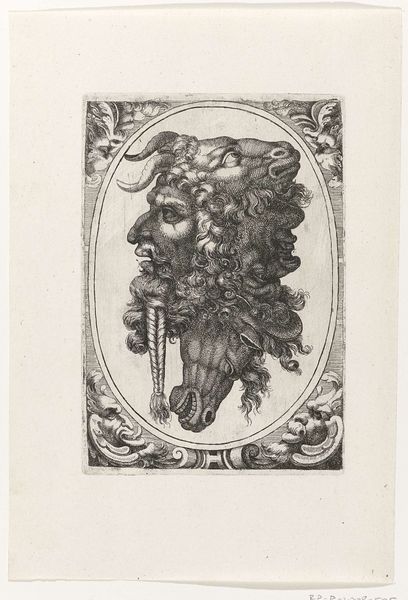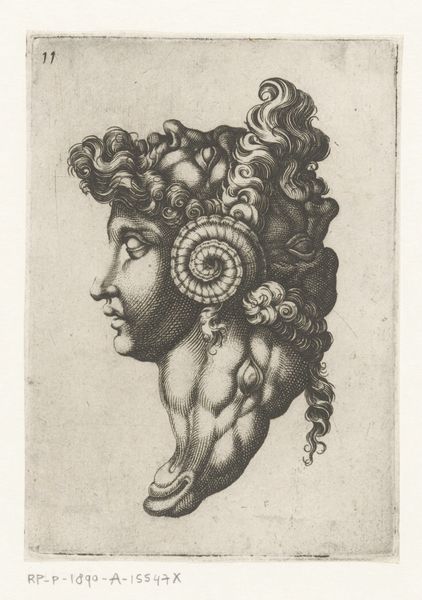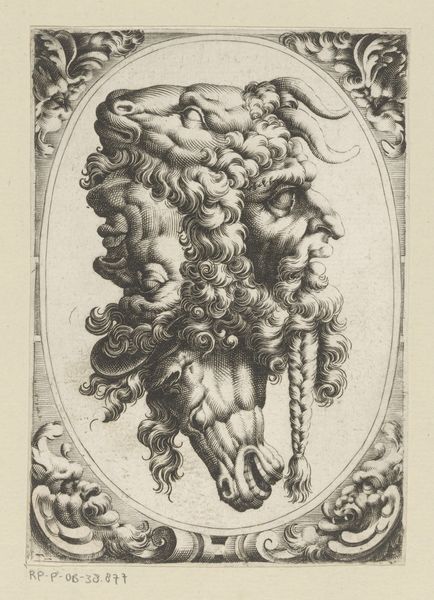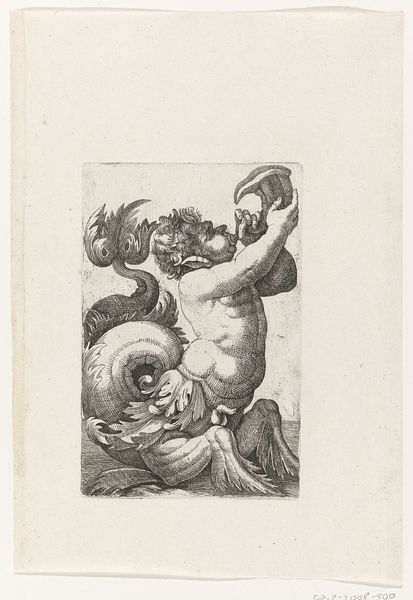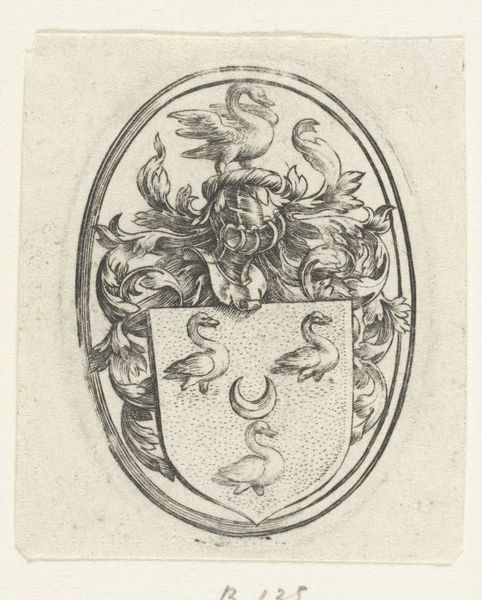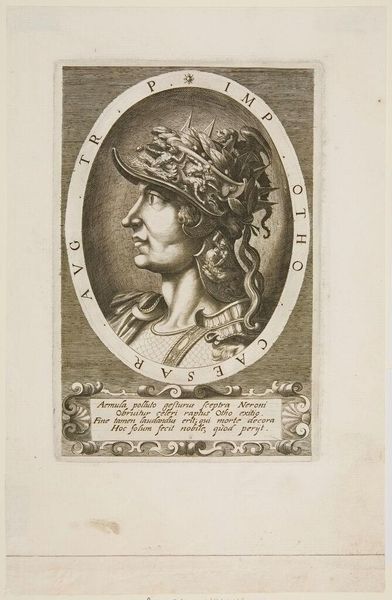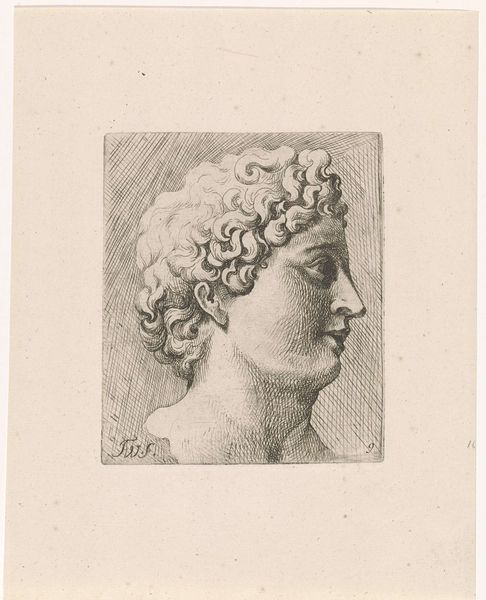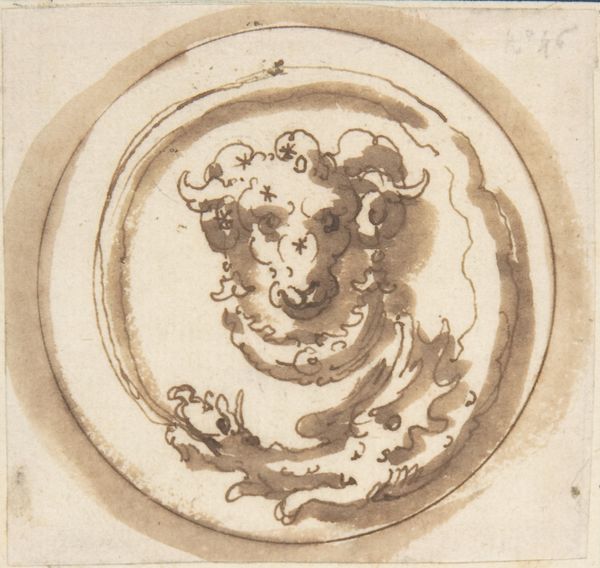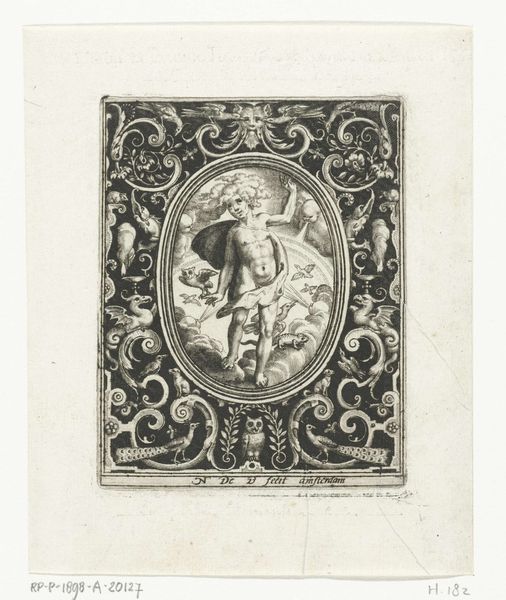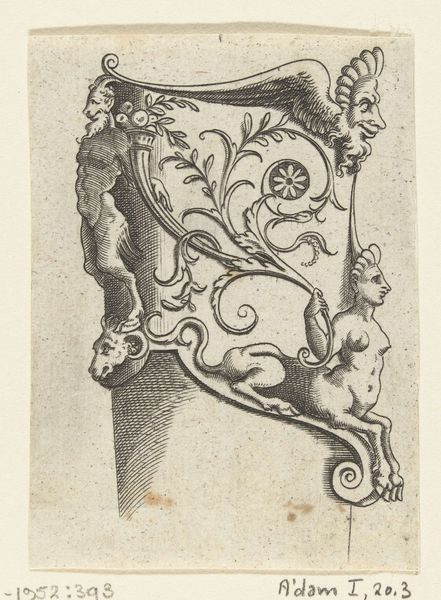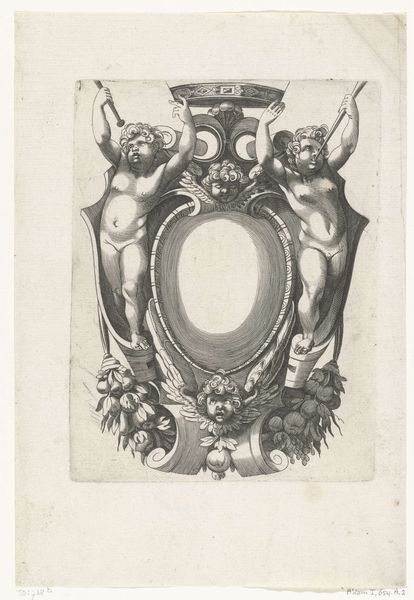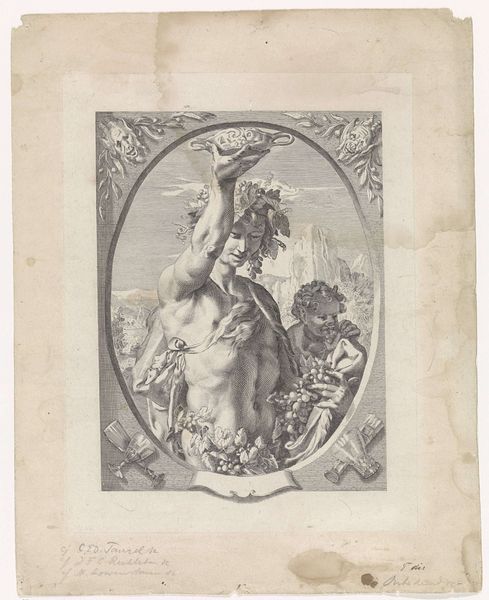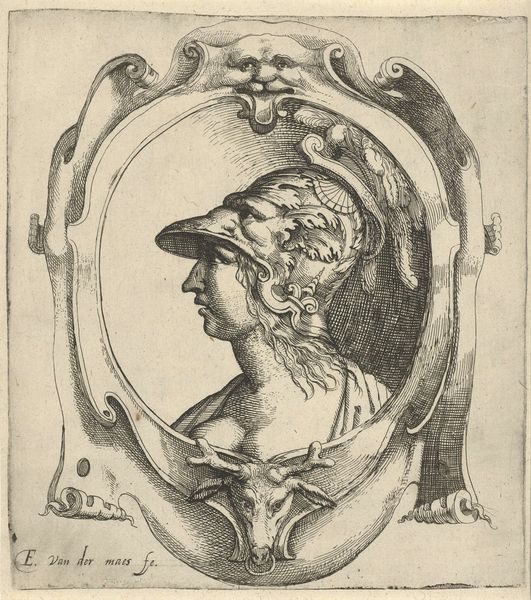
Samenstelling van drie gezichten en de kop van een ram c. 1580 - 1610
0:00
0:00
drawing, print, engraving
#
portrait
#
drawing
# print
#
old engraving style
#
mannerism
#
engraving
Dimensions: height 151 mm, width 105 mm
Copyright: Rijks Museum: Open Domain
Curator: This engraving, titled "Samenstelling van drie gezichten en de kop van een ram," or "Composition of three faces and a ram's head," is attributed to Giovanni Andrea Maglioli and dates to about 1580-1610. It’s part of the Rijksmuseum's collection. Editor: It immediately strikes me as something unsettling. There's an unnerving quality to the composition. The stark lines and shading create an almost grotesque texture. I wonder about the printing process involved in such intricate work, especially from that era. Curator: The grotesque is certainly part of its Mannerist charm. The composite head itself, a popular motif at the time, speaks to a fascination with allegory and the mutability of identity. See how the individual elements—the human profiles and the ram's head—become almost monstrous when combined. What did the material context signify to its audience? Editor: Right, but think about the labor: The tools, the paper or metal, the conditions in the workshop. Who was commissioning these prints, and for what purpose? Were they widely circulated or produced for a more exclusive market? Curator: Prints like these were often collected in albums and used as models for artists or craftsmen. They acted as a sort of visual dictionary, disseminating stylistic ideas throughout Europe. We can look closely into this and also at the engraving itself. Its dense cross-hatching really captures a range of textures, from the soft curls of hair to the hard edges of the ram’s horn. Also, I would assume the shell in place of an ear alludes to classical allegories about listening and interpreting sounds. The overall mood is intriguing. Editor: The texture is very successful. Consider the distribution networks: from the artist’s workshop to collectors. It hints at global trade. It's interesting to see how the use of specific engraving tools created texture as well. The sharp, decisive lines. But why that specific aesthetic, though? Curator: Perhaps to shock, to inspire awe, or to provoke deeper thought. Such images, loaded with symbolism, were meant to be deciphered and debated, engaging the viewer on both an intellectual and emotional level. Editor: I'm still stuck on how labor relates to it all and why printmaking continues to exist, it provides wider availability to images. Ultimately, looking at these prints forces me to consider the complex dance between artist, materials, and society that brings a work like this into being. Curator: Agreed. These visual motifs had staying power, weaving themselves into the broader tapestry of art history. Editor: Definitely gives you something to consider for future generations.
Comments
No comments
Be the first to comment and join the conversation on the ultimate creative platform.
